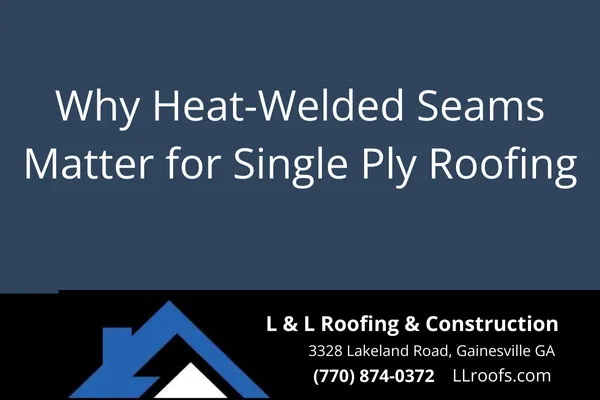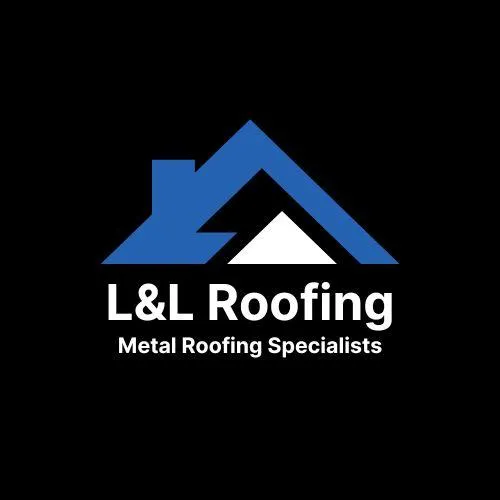
Why Heat-Welded Seams Matter for Single Ply Roofing
Heat-Welded Seams in Single Ply Roofing: What Homeowners in Gainesville Need to Know
When it comes to single ply roofing systems—like TPO and PVC—how the seams are connected makes a world of difference. One of the most reliable methods? Heat-welded seams. At L&L Roofing & Construction, we see firsthand how this detail directly affects performance, longevity, and protection for homes across Gainesville, Cumming, Buford, and surrounding areas.
Here’s what you should know.
What Are Heat-Welded Seams?
In single ply roofing, sheets of membrane are overlapped and joined together. With heat-welded seams, a hot-air welder is used to melt the overlapping layers, fusing them into a single, continuous sheet.
This process doesn’t just “stick” things together—it actually bonds the material at a molecular level, creating a uniform membrane across your entire roof surface.
Why Heat-Welded Seams Outperform Other Methods
✅ Watertight Protection
Gainesville gets its fair share of rain. Heat-welded seams are more resistant to leaks than glued or taped seams because there are no adhesives to fail over time. That’s peace of mind during every storm.
✅ Long-Term Durability
Heat-welded seams last longer under UV exposure, temperature shifts, and roof movement. Adhesives tend to degrade or dry out—especially under Georgia’s hot summers. Welded seams, on the other hand, stay tight for decades.
✅ Stronger Bond
Welded seams are as strong as the roofing membrane itself—no weak points to worry about. That means fewer potential failure points and longer roof life.
✅ Faster and Cleaner Repairs
If your roof ever does need a patch or modification, heat-welded systems are easier and cleaner to repair, without messy adhesive removal or reapplication.
Where Heat-Welded Seams Make the Most Sense
Low-slope and flat roofs
TPO (Thermoplastic Polyolefin) and PVC single ply systems
Residential additions, garages, and sunrooms
Commercial buildings, especially where long-term waterproofing is non-negotiable
We’ve installed these systems for both homeowners and business owners who want long-lasting, low-maintenance protection.
Does Every Roofer Use Heat-Welded Seams?
Not necessarily. Some roofers still use tapes or adhesives to join single ply seams—usually because it’s cheaper or requires less training. At L&L Roofing, we never cut corners.
Luke Heaps and our trained crew use industry-standard hot air welding equipment and follow all manufacturer specifications to the letter. We don’t just meet code—we aim for maximum performance and integrity.
FAQs
How long do heat-welded seams last?
When properly installed and maintained, heat-welded seams can last the life of the roof—20+ years or more for TPO and PVC systems.
Are heat-welded seams good for homes in North Georgia?
Absolutely. They hold up well to our humidity, rainfall, and seasonal swings in temperature.
What does it cost to install a single ply system with heat-welded seams?
Costs vary by size and complexity, but it’s an affordable and long-term roofing option for garages, additions, and commercial properties. We'll walk you through every option clearly.
Our Promise to You
At L&L Roofing & Construction, we don’t just install roofs. We protect homes, build trust, and do the right thing—every time.
If you’re considering single ply roofing in Gainesville, Flowery Branch, or Dawsonville, ask us about heat-welded seams. It’s the kind of detail that separates a “temporary fix” from a roof you can count on.
Ready to talk about your project?
Call us at (770) 874-0372 or visit llroofs.com

